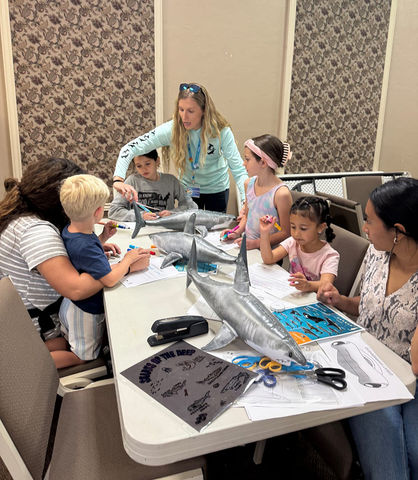Notes from the Field: Exploring Maternal Influence on Atlantic Sharpnose Shark Pups
- Sharks4Kids
- May 16, 2024
- 3 min read
Author: Jessica Dehn
Jess is currently a Master’s student at Florida State University in the Ichthyology and Fisheries Science Lab.
"My research interests lie in fish ecology, specifically their trophic ecology through stable isotope analysis. My past research focused on determining the time in which diet is reflected in the tissue of sharksuckers, Eceheneis naucrates, using such analysis. Within my time in marine biology, I have become increasingly interested in deep sea fishes and determining their trophic and community structure. My MSc research will utilize stable isotope analysis in order to form a standard for these deep sea fishes' structures in the Gulf of Mexico."
I grew up in Central Florida, but I took advantage of the proximity to the ocean any chance I got. Summers were spent with my grandparents in Cocoa Beach where my brother and I would swim and take surf lessons, always remaining curious of what lie below. This eventually led me to focusing on marine science for my degree at the University of Central Florida. It was not until I interned at the Cape Eleuthera Institute (CEI) that I developed this passion for sharks and shark science. On the morning of September 12th, 2018, all interns were given the opportunity to go longlining for CEI’s long-term pelagic longline data set. Although this historically had not been a very fruitful set, we pulled up an ~80 cm. silky shark, Carcharhinus falciformis. I was told how to measure and take the needed samples, and then we released it. That was as much of an “aha!” moment as I could have gotten.
Fast forwarding through other experiences, this brings me to where I am now as a master’s student at Florida State University. I was interested in so many aspects of shark research at the beginning, but I eventually figured out that it was most essential for my master’s research to involve diet and its effects on sharks. Diet because I wanted to understand its effect on behavior and sharks because, well, I’m sure you know why.

Atlantic Sharpnose Shark Credit: Andy Murch
The Atlantic sharpnose shark, Rhizoprionodon terraenovae, is the most abundant shark species found in the coastal waters of the Gulf of Mexico and northern Atlantic Ocean. Due to its small size (max ~107 cm. total length) it is often subject to pressures from predation and commercial fishing. To combat these pressures, Atlantic sharpnose sharks have enlisted multiple advantageous life history traits, like annual reproduction cycles and quick maturation, to continue to replenish their populations. My master’s research focuses on maternal influence on the diet of the earliest stages of Atlantic sharpnose sharks, known as “young-of-year.” Essentially, do Atlantic sharpnose shark moms nutritionally prepare their pups pre-birth enough that they can spend time learning how to hunt post-birth OR, do they have to immediately begin hunting? Understanding this requires a combination of an analysis of tissue, known as stable isotope analysis, and gut-content analysis (what is in their stomachs at the time of sampling).

Jessica taking a blood sample from a “young-of-year” individual.
Sampling was completed during the summer of 2023 in St. George Sound, FL which is right off Florida State University’s Coastal and Marine Laboratory. I acquired all whole body individuals (n=167), collecting tissue (red blood cell, blood plasma, liver, and muscle) from each. Samples were sent for stable isotope analysis, which will show Carbon-13 and Nitrogen-15 values, essential to understanding where maternal influence stops. Gut-contents are starting to be extracted, and I should be able to see patterns in diet soon. Overall, this research is important to recognize how Atlantic sharpnose shark mothers set their pups up for success.


















